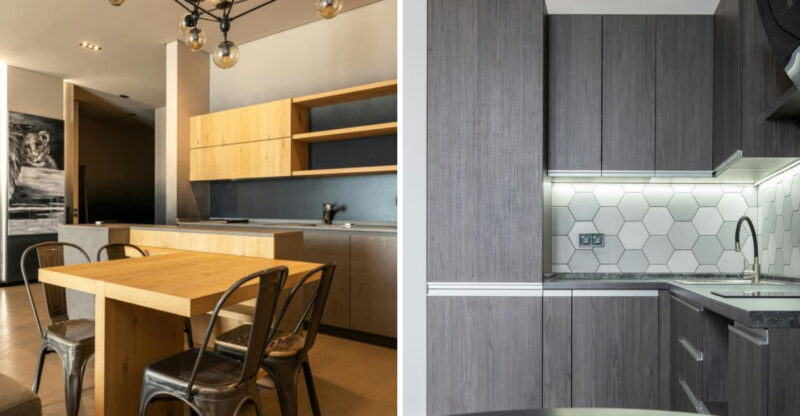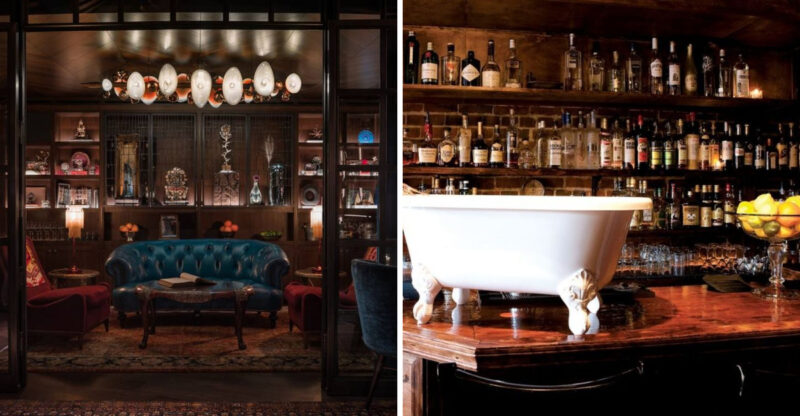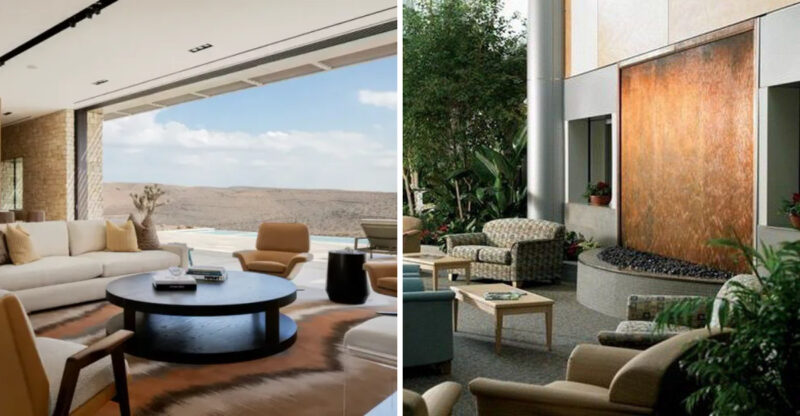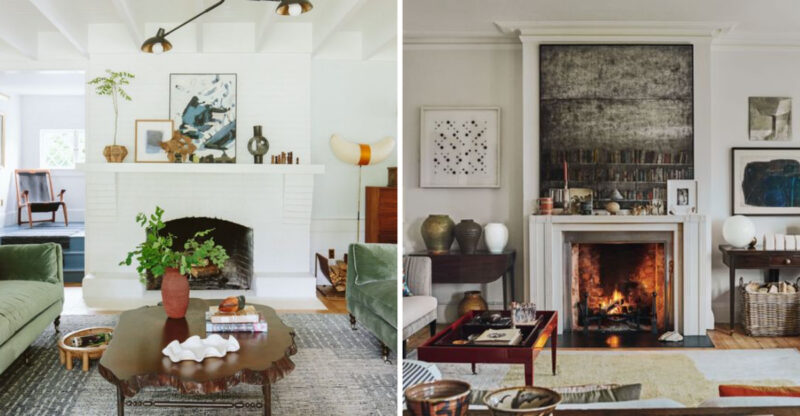7 Smart Cabinet Tips That Could Open Up Your Kitchen Space
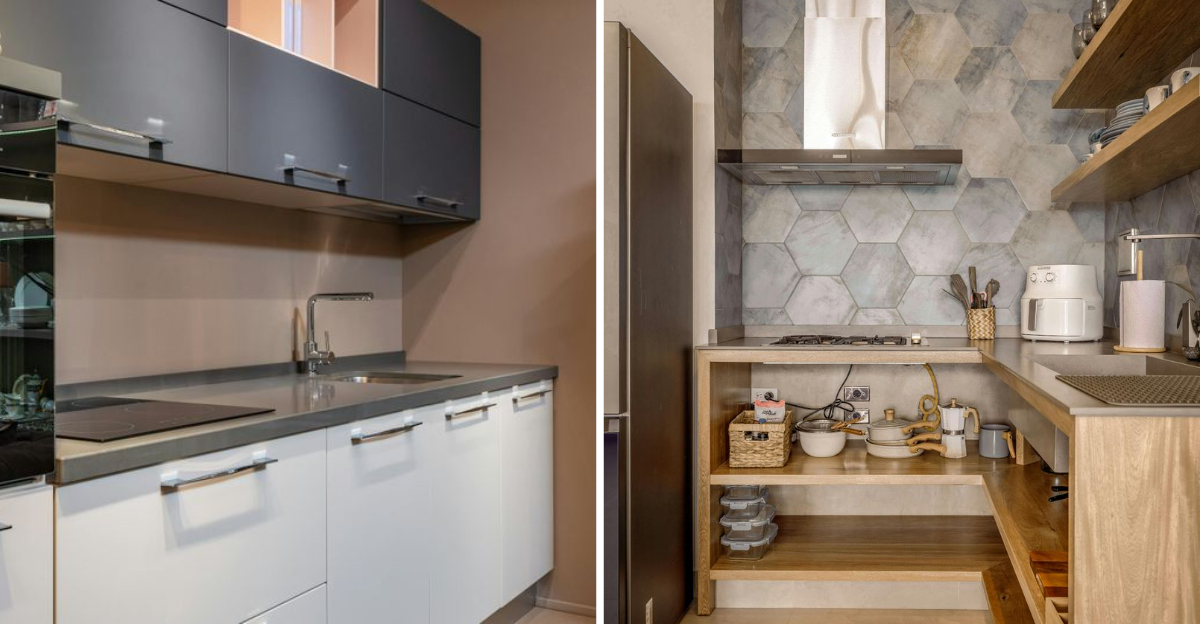
Feeling cramped in your kitchen? You’re not alone. Many of us struggle with limited kitchen space, making cooking and meal prep feel like a frustrating puzzle.
The good news is that with some clever cabinet tweaks, you can transform your kitchen into a more spacious, functional area without knocking down any walls.
Let’s explore 7 smart cabinet tips that will help you reclaim your kitchen space. Keep in mind, the effectiveness of these tips can vary depending on your kitchen’s layout, cabinet size, and storage needs.
1. Install Pull-Out Shelves
Pull-out shelves are game-changers for deep cabinets where items often disappear into the abyss. I installed these in my lower cabinets last year, and now I can access everything without performing acrobatics or emptying half the cabinet.
The sliding mechanism brings all your cooking supplies forward with one simple motion, eliminating the frustration of reaching for that pot or appliance hiding in the back. Even better, they maximize vertical space by letting you stack items without creating an avalanche when you need something.
Most home improvement stores sell retrofit kits that work with existing cabinets, making this an affordable weekend project rather than a full renovation. Your knees and back will thank you!
2. Use Glass-Front Doors on Upper Cabinets
Glass cabinet doors create an instant illusion of more space in cramped kitchens. When I replaced my solid upper cabinet doors with glass ones, my kitchen suddenly felt twice as big! The transparent fronts trick the eye into seeing beyond the cabinet face, adding visual depth.
This switch also encouraged me to organize my dishes and glassware more thoughtfully since they’re now on display. For the items I don’t want visible, I keep a few solid-door cabinets in the mix.
You don’t need to replace entire cabinets either many cabinet doors can be retrofitted with glass panels by a carpenter, or you can even try a DIY approach with ready-made glass inserts from hardware stores.
3. Opt for Lighter Cabinet Colors
Dark cabinets might look sleek, but they absorb light and make kitchens feel smaller. I painted my cabinets a soft cream color last spring, and visitors now comment on how much bigger my kitchen looks though I haven’t changed a single dimension!
Lighter colors reflect more light around the room, creating an airy, open feeling that dark finishes simply can’t match. White, cream, light gray, or pale blue are excellent choices that brighten your space instantly.
If a complete repaint seems daunting, consider just refreshing the upper cabinets in a lighter shade while keeping lower cabinets darker for a modern two-tone look. This approach grounds the space while still opening it up visually.
4. Add Under-Cabinet Lighting
Shadows lurking under cabinets make countertops feel smaller and kitchens darker. When I installed LED strip lights beneath my upper cabinets, the transformation was immediate my workspace doubled visually while my chopping accidents decreased significantly!
These lights eliminate dark corners and showcase your countertop’s full depth. They’re particularly helpful for evening cooking when overhead lighting casts shadows exactly where you’re working.
Modern LED options are energy-efficient, slim enough to remain hidden from view, and often come with adhesive backing for simple installation. Many are even available with remote controls or dimming features so you can adjust the brightness based on your task or mood. No electrician required for many plug-in versions!
5. Keep Clutter Off Countertops by Maximizing Cabinet Space
Cluttered countertops make even spacious kitchens feel cramped and chaotic. After implementing a strict “only daily essentials” policy for my counters and finding proper homes for everything else inside cabinets, my kitchen instantly felt twice as large!
Start by honestly assessing which appliances truly need counter space. That bread maker used three times yearly? Store it. Coffee maker used daily? It stays. For items that remain, create dedicated zones cooking, prep, cleaning to maintain visual order.
Inside cabinets, maximize every inch with stackable shelves, door organizers, and drawer dividers. Even small additions like shelf risers can double storage capacity. The payoff is immediate: more functional workspace, easier cleaning, and a kitchen that feels open rather than overwhelming.
6. Install Soft-Close Hinges
Slamming cabinet doors create noise pollution and eventually damage both the doors and the cabinet frames. I upgraded to soft-close hinges last summer, and now my cabinets close with a satisfying whisper instead of a bang even when I’m in a hurry!
These hinges contain a hydraulic mechanism that catches the door before it slams and gently pulls it closed. They’re particularly helpful for households with children who haven’t mastered the art of gentle cabinet closing.
Beyond the noise reduction, soft-close hinges extend cabinet life by preventing the repeated impact damage that eventually loosens hinges and cracks cabinet frames. Most existing cabinets can be retrofitted with these hinges without replacing the entire door, making this an affordable upgrade with immediate benefits.
7. Choose Open Shelving for Frequently Used Items
Open shelving creates breathing room in tight kitchens while keeping everyday items within arm’s reach. I replaced two upper cabinets with floating shelves near my stove, and cooking suddenly became more efficient no more opening and closing doors while my hands are covered in sauce!
The key is using these shelves strategically for items you reach for daily: drinking glasses, everyday dishes, or cooking staples. The visual openness makes small kitchens feel larger and more inviting.
If you’re worried about dust, choose items that get used (and washed) frequently enough that dust doesn’t have time to settle. Wood, metal, or painted shelves can complement your existing cabinets while adding character and texture to your kitchen’s design.

